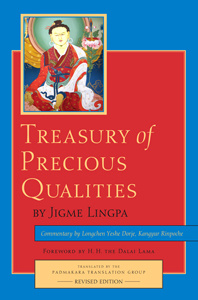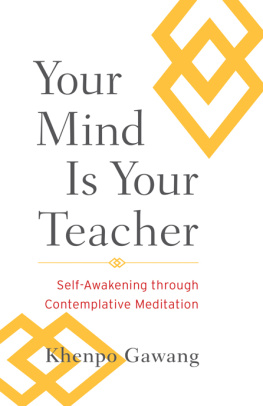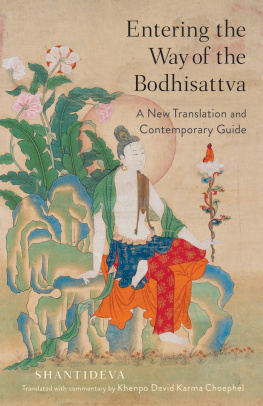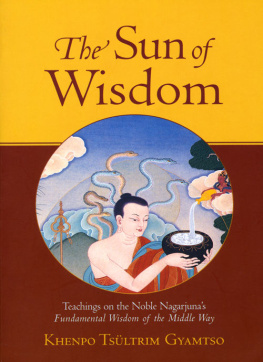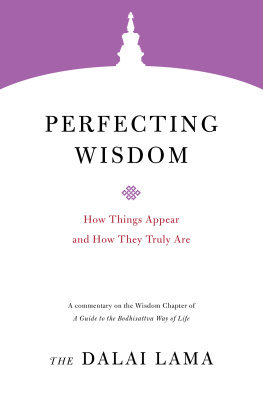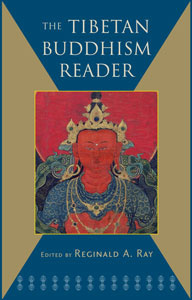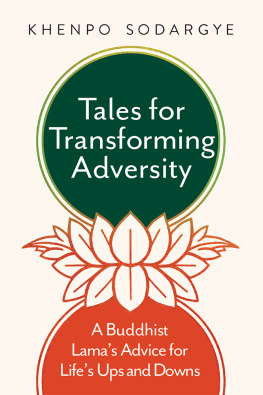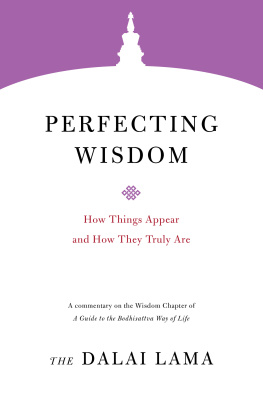Anyone with a true interest in the teachings of Buddha, and especially the practice of Dzogchen, will treasure Patrul Rinpoches Words of My Perfect Teacher as a simply indispensable source of teachings on all practices, whether preliminaries or main. How wonderful now to have this guide, a priceless treasure of explanation, clarification, and practical advice from the heart of the great oral lineage of the Great Perfection, handed down by Patrul Rinpoche himself and recorded by Khenpo Ngawang Pelzang, one of the most influential Dzogchen masters of recent times.
Sogyal Rinpoche, author of The Tibetan Book of Living and Dying
The definitive guide to Patrul Rinpoches classic is now available in English, allowing English-speaking practitioners to deepen their study and understanding of this indispensable collection. This remarkable volume is an important step in the ongoing transmission of buddhadharma to the West.
Khandro Rinpoche, author of This Precious Life
A brilliant and beautifully tapestried companion to a timeless Tibetan classic. Essential for all who aspire to develop selfless compassion and to follow the path to realization in this life.
Reginald A. Ray, author of Secret of the Vajra World
ABOUT THE BOOK
This guide provides readers with essential background information for studying and practicing with Patrul Rinpoches Words of My Perfect Teacherthe text that has, for more than a century, served as the reliable sourcebook to the spiritual practices common to all the major schools of Tibetan Buddhism. By offering chapter-by-chapter commentary on this renowned work, Khenpo Pelzang provides a fresh perspective on the role of the teacher; the stages of the path; the view of the Three Jewels; Madhyamika, the basis of transcendent wisdom; and much more.
KHENPO NGAWANG PELZANG (18791941) was a major teacher and abbot in the Nyingma Lineage of Buddhism in Tibet. He studied for years with a close disciple of Patrul Rinpoche, from whom he received direct instructions on how to study and practice with The Words of My Perfect Teacher.
Sign up to learn more about our books and receive special offers from Shambhala Publications.

Or visit us online to sign up at shambhala.com/eshambhala.
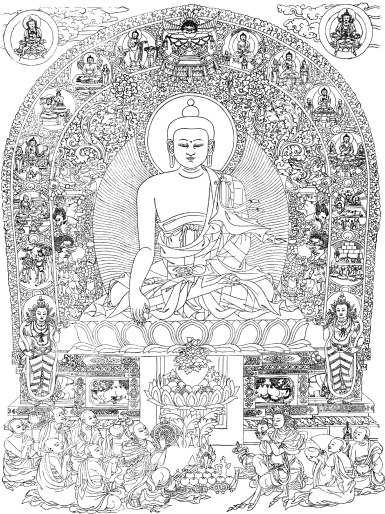
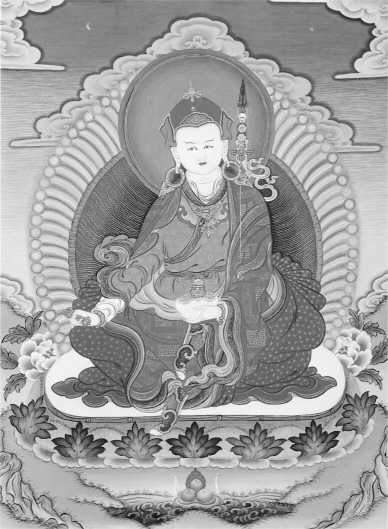
A Guide to
THE WORDS of MY PERFECT TEACHER
KHENPO NGAWANG PELZANG
Translated under the auspices of
DIPAMKARA
in collaboration with
THE PADMAKARA TRANSLATION GROUP

SHAMBHALA
Boston & London
2011

SHAMBHALA PUBLICATIONS, INC.
HORTICULTURAL HALL
300 MASSACHUSETTS AVENUE
BOSTON, MASSACHUSETTS 02115
www.shambhala.com
2004 by Padmakara Translation Group
Cover art: Thangka painting of Manjushri, eighteenth century. Image #587, courtesy of the Shelley and Donald Rubin Foundation, http://www.himalayanart.org.
All rights reserved. No part of this book may be reproduced in any form or by any means, electronic or mechanical, including photocopying, recording, or by any information storage and retrieval system, without permission in writing from the publisher.
Library of Congress Cataloging-in-Publication Data
Nag-dban-dpal-bzan, Mkhan-po, 18791941
A guide to the words of my perfect teacher/Khenpo Ngawang Pelzang; translated by the Dipamkara Translation Group in collaboration with the Padmakara Translation Group.1st ed.
p. cm.
Includes bibliographical references and index.
eISBN 978-0-8348-2421-8
ISBN 978-1-59030-073-2 (alk. paper)
1. Rdzogs-chen (Rnin-ma-pa) 2. Spiritual lifeBuddhism. 3. BuddhismChinaTibetDoctrines. I. Kun bzan bla mai zal lun. II. O-rgyan-jigs-med-chos-kyi-dban-po, Dpal-sprul, b. 1808. Kun bxan bla mai zal lun. III. Title.
BQ7662.4 .N3315 2004
294.3923dc22
2003016978
Contents
All drawings are by Olivier Philippot unless otherwise stated.

K HENCHEN NGAGI WANGPO was Kunkhyen Longchen Rabjam reborn in the Khromtha region of Kham (eastern Tibet) as the protector of the doctrine and beings. He received The Words of My Perfect Teacher, a guide to the preliminaries for the Heart Essence of the Vast Expanse from the Great Perfection, on several occasions from the great Khenpo Lungtok, who was the heart son of Dzogchen Palge Tulku, and at different times he made notes on the oral instructions handed down from Patrul Rinpoche and the experiential instructions he received from his root teacher. All these his disciples put together unedited and included in Khenpo Ngagas collected works.
Now Choktrul Pema Wangyal Rinpoche, director of Padmakara, and translators Anne Benson, Christian Bruyat, John Canti, and Stephen Gethin, together with Ani Jinba, Patrick Gaffney, and Peter Roberts, have painstakingly translated these notes into English with meticulous reference to editions from both India and Tibet and are having them published. To all of them, and to Mr. Patrick Godwin Naylor, president of Dipamkara, Padmakaras sister organization, whose financial support made this project possible, and Jenny Kane, Dipamkaras manager, who nurtured the project and acted as editor, I would like to express my immense heartfelt gratitude.
It is my sincere wish that this book may serve to sow the seed of liberation in the minds of numerous readers, help them engender the shoot of bodhichitta, and finally benefit both themselves and others.
Alak Zenkar Thubten Nyima Rinpoche
E VER SINCE ITS PUBLICATION in the middle of the nineteenth century, Patrul Rinpoches Kunzang Lamai Shelung, known to many Western readers as The Words of My Perfect Teacher, has been acknowledged as an indispensable guide to the preliminary practices, not only for followers of the Longchen Nyingtik tradition in the Nyingma school of Tibetan Buddhism, for whom it was originally written, but also for anyone with a sincere desire to put the Buddhist teachings into practice. Patrul Rinpoches work has a special place within the Tibetan commentatorial tradition with its direct, often humorous style and wealth of anecdotes. It makes the teachings immediately accessible to complete beginners while providing frequent reminders of the obstacles on the path that can all too easily prove the undoing of seasoned practitioners.
In the Kunzang Lamai Shelung Patrul Rinpoche put down in writing for the first time teachings that had hitherto been passed from master to disciple only in the form of oral advice and instruction. This tradition of oral transmission did not stop with the publication of his book, however. Even for the fortunate students who now had access to these teachings in printed form, it was no less important to receive transmission and instruction directly from their teacher. In the first place, the Buddhist tradition of oral transmission (
Next page
